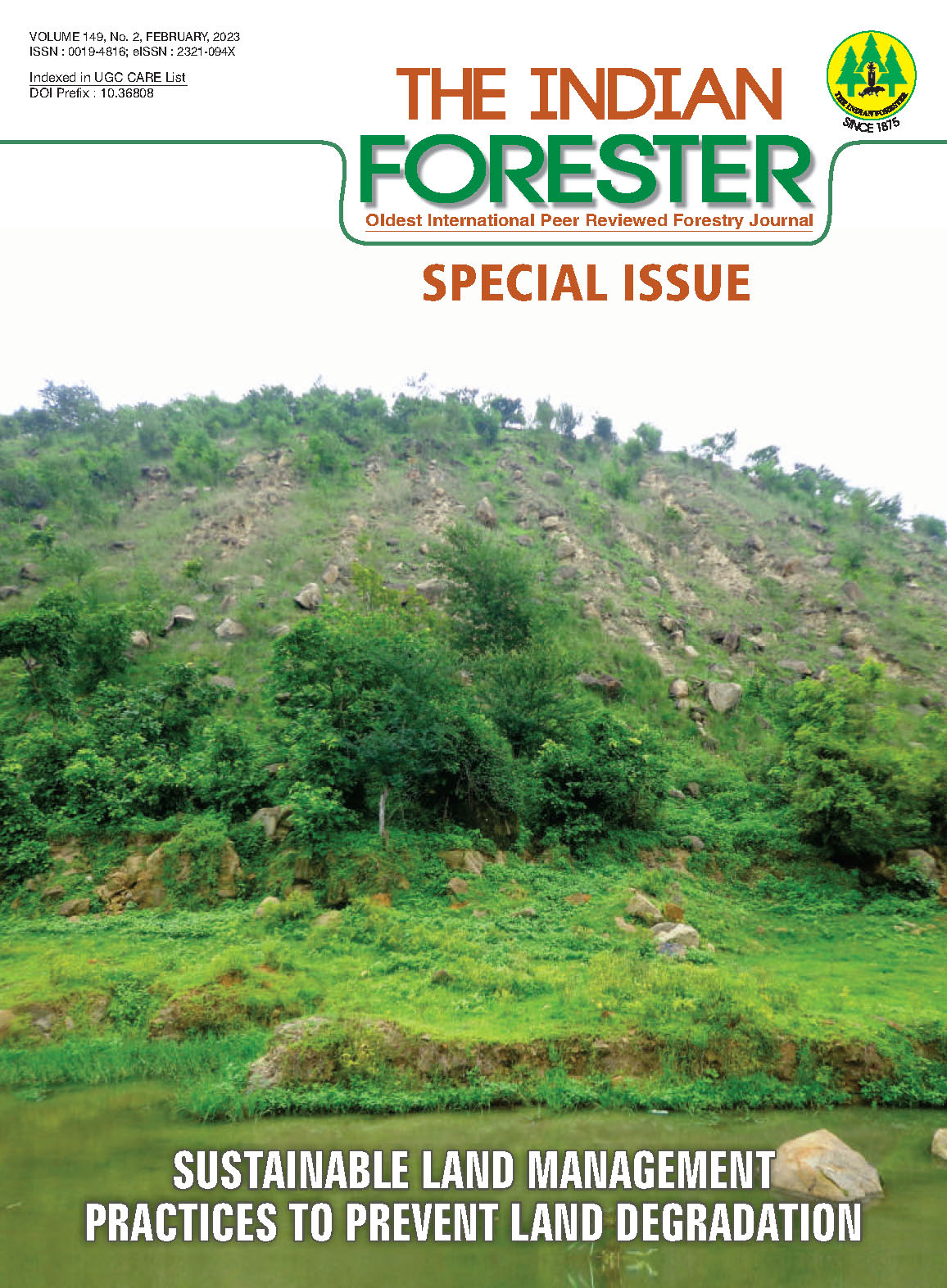Propagation of Some Indigenous Plant Species for Restoration of Degraded Landscapes of Cold Desert in North-West Himalaya
DOI:
https://doi.org/10.36808/if/2023/v149i2/168231Keywords:
Cold Desert, Propagation, Capparis spinosa, Colutea nepalensis, Hippophae rhamnoides, Ribes alpestre, Rosa webbiana, Elaeagnus angustifolia.Abstract
Indigenous species having ecological significance and multipurpose uses should be promoted in restoration of degraded landscapes of the cold deserts of North-West Himalaya. Availability of the planting stocks of indigenous species in sufficient quantity for restoration is one of the challenges in the cold deserts as it is difficult to raise the planting stocks of indigenous species easily in the nursery due to their xerophytic nature for adapting towards the harsh climatic conditions. Indigenous plant species of cold deserts of North-West Himalaya having ecological significance and multipurpose uses viz., Capparis spinosa L., Colutea nepalensis Sim, Hippophae rhamnoides subsp. turkestanica Rousi, Ribes alpestre Wall. ex Decne., and Rosa webbiana Wall. ex Royle were selected for developing propagation methods. Besides, these indigenous species, Elaeagnus angustifolia an ecologically important and sacred species reported in the cold desert was also selected for developing its propagation methods. Shoot cuttings of Elaeagnus angustifolia treated with 6000 ppm of indole-3-butyric acid (IBA) in quick dip method recorded 71.82% rooting and shoot cuttings of Hippophae rhamnoides treated with 3000 ppm of IBArecorded 85% rooting in the poly house condition in the cold deserts. Rooting in the treated cuttings was also recorded better in the open nursery conditions. Cuttings of root suckers of Rosa webbiana in pure sand medium can be used for raising the planting stocks instead of shoot cuttings. Seeds of H. rhamnoides and Colutea nepalensis need to be dipped in the hot water and left as such for 16 hrs to get the better seed germination under the nursery conditions. Seeds of Ribes alpestre, Capparis spinosa and Rosa webbiana also showed some promising results when dipped in the hot water than the untreated seeds but there is need for more research on these species to develop suitable cost-effective methods for increasing their seed germination for raising the planting stocks easily in the nursery conditions of the cold deserts.Downloads
Download data is not yet available.
Downloads
Published
2023-05-04
How to Cite
Rawat, R. S., & Kapoor, K. S. (2023). Propagation of Some Indigenous Plant Species for Restoration of Degraded Landscapes of Cold Desert in North-West Himalaya. Indian Forester, 149(2), 178–183. https://doi.org/10.36808/if/2023/v149i2/168231
Issue
Section
Articles
License
Unless otherwise stated, copyright or similar rights in all materials presented on the site, including graphical images, are owned by Indian Forester.





